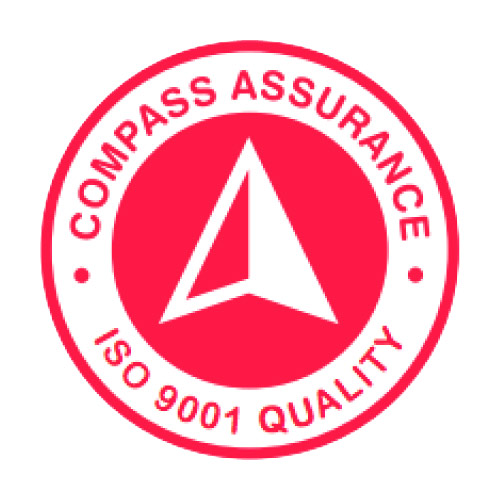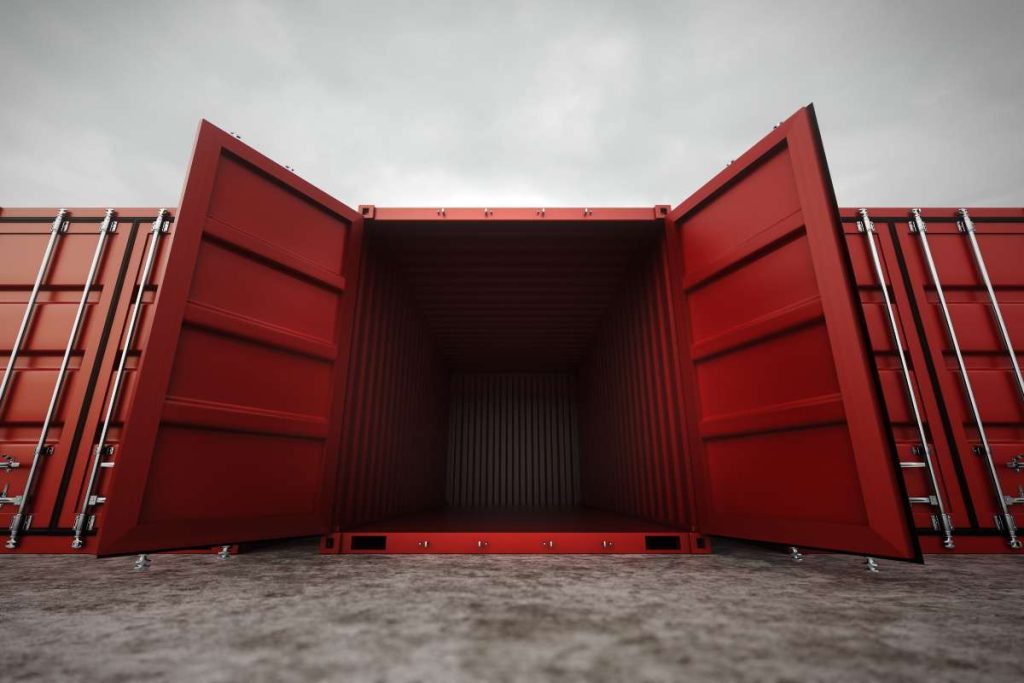Have you ever considered having your shipping container spray painted? You should. There are so many benefits to hiring an expert to revitalise your storage containers, whether they’re utilised for transport or stationary purposes.
A professional spray painter has the skills, equipment, and experience to get the job done right. They can paint your containers efficiently and effectively, saving you time and money. They also have access to high-quality, durable paints designed specifically for painting metal surfaces like shipping containers.
The results will be far superior to anything you could achieve with a couple of rattle cans from the hardware store. A professional spray painter can handle complex application processes, adding patterns and logos to transform your containers into bold, eye-catching pieces. Your containers will not only look wonderful but get extra protection from the elements to ensure long-lasting durability. A pro paint job will protect the metal from rust and weather damage, extending the life of your containers.

Why Paint Your Shipping Container?
There are several benefits to having a professional apply shipping container spray paint:
- Protection. A new paint job protects the metal from rust and corrosion, especially important for containers constantly exposed to coastal environments. The paint forms a protective barrier, sealing the surface. Our professional team has a tried and true formula for marine environment protection that better protects from salt water and other rust-causing conditions.
- Aesthetics. Let’s face it, bare metal shipping containers aren’t the most attractive things to have sitting around. A custom paint job in your company colours or even a mural can spruce them up and make them a real focal point.
- Branding. For businesses, painted containers offer a great branding opportunity. You can have your logo, contact information and colour scheme prominently displayed for all to see. It’s an inexpensive form of advertising that gets your name in front of customers and clients every day.
- Resale value. When the time comes to sell or trade-in your containers, a professional paint job in good condition will increase the resale price. The containers will simply appear newer and better maintained, appealing to buyers.
- Durability. Professionally applied paint, especially industrial coatings, is built to withstand exposure to elements without fading or chipping for many years. You’ll get more mileage out of a pro paint job versus a DIY approach.
- Time savings. Attempting to paint multiple shipping containers yourself requires an enormous amount of time and effort to do properly. Hiring professionals with the proper equipment will save you time, and frustration and result in a flawless finish.
About Your Shipping Containers Paint System
A marine spray paint system typically consists of several key components, each serving a specific purpose in achieving the desired protective and aesthetic finish for marine structures and vessels. Here’s a breakdown of the main components of a marine spray paint system:
Each spray system is different depending on the purpose and material of the item. APT Spray Painting can provide you with a comprehensive quote for your shipping container spray paint project, outlining the spray system in advance so you know exactly what will be applied.
Surface Preparation
Surface Cleaning: This involves the removal of contaminants such as grease, oil, rust, and salt from the substrate. Methods may include pressure washing, abrasive blasting, or chemical cleaning.
Surface Sanding or Abrasion: Depending on the substrate condition, sanding or abrasive blasting may be necessary to create an appropriate surface profile for paint adhesion.
Surface Priming: In some cases, a primer specifically designed for surface preparation, such as a surface-tolerant epoxy primer, may be applied to promote adhesion.
Spray System
Surface Priming: Before shipping container spray paint is applied, the first step is priming. Apply a suitable primer to enhance adhesion and provide a barrier against corrosion. Epoxy or zinc-rich primers are often used for this purpose.
Build Coats: These intermediate coats serve to build thickness, add durability, and enhance adhesion between the primer and the topcoat. Epoxy or polyurethane intermediate coatings are typical choices.
Topcoat: The topcoat provides the final appearance, colour, and protective finish. Marine topcoats can be epoxy, polyurethane, or other specialised coatings designed for marine environments.
Anti-Fouling Coating: For boat hulls and submerged structures, anti-fouling coatings are applied to prevent the growth of marine organisms such as barnacles and algae.
Anti-Graffiti Coating (Optional): In urban areas or high-traffic locations, an anti-graffiti coating may be applied to make it easier to remove unwanted graffiti or markings.
Anti-Corrosion Measures (Optional): For extreme environments or when additional corrosion protection is needed, coatings with special anti-corrosion properties can be applied over the topcoat.
Maintenance and Recoating Plan
A well-defined maintenance plan should be in place to monitor the condition of the coating system and schedule recoating as necessary to maintain protection and aesthetics.
The specific paint system used can vary based on factors such as the container’s material (typically steel), intended use (e.g., shipping, storage, or conversion into a mobile unit), and environmental conditions (e.g., coastal areas with high salt exposure). Local regulations and environmental considerations may also influence the choice of coatings (paint VOCs).
It’s essential to consult with coating manufacturers or coating experts to select the most suitable paint system for your specific shipping container project, ensuring that it provides the required protection and aesthetics while adhering to relevant safety and environmental standards.
When is it time to repaint a shipping container?
Repainting a shipping container may need to happen for a variety of reasons and depending on how it’s used, at different timeframes. For example, a container used for living or storage inland (farm storage, or temporary accommodation) will require less repainting in its life than marine usage. Still, there are some telltale signs that a repaint is needed.
Regularly inspect the container’s exterior for signs of paint deterioration, such as peeling, cracking, rust spots, or discolouration. If you notice these issues, it may be time to repaint.
Rust is a common concern, especially if the container is exposed to moisture or salt-laden environments. If rust spots are forming on the container’s surface, it’s essential to address them promptly to prevent further corrosion. Repainting with an appropriate anti-corrosion coating is often necessary.
Containers located in harsh environments, such as coastal areas with saltwater exposure or regions with extreme temperature variations, may require more frequent repainting. Saltwater can accelerate corrosion, while temperature fluctuations can cause paint to deteriorate.
It’s important to note that repainting a shipping container is not just about aesthetics; it’s also about preserving the container’s structural integrity and protecting it from corrosion and deterioration. Regular maintenance, including repainting when necessary, can help prolong the container’s lifespan and ensure its continued functionality and appearance. The frequency of repainting should be determined based on a combination of these factors and best practices for container maintenance in your specific context.
How to Prevent Rust on Shipping Container
Shipping container spray paint, when used correctly and as part of a comprehensive coating system, can help prevent rust on shipping containers by providing a protective barrier between the metal surface and the corrosive elements in the environment.
Spray paint creates a continuous, impermeable film when applied properly. This film seals the metal surface, preventing moisture, oxygen, and other corrosive agents from coming into direct contact with the metal. This barrier is essential for rust prevention because rust is the result of the oxidation of iron or steel when exposed to moisture and oxygen.
Some spray paints, especially those designed for rust prevention or marine applications, may contain corrosion inhibitors as part of their formula. These additives further enhance the paint’s ability to prevent rust by actively inhibiting the corrosion process.
Hiring a Professional Spray Painter
When it comes to spray painting shipping containers, it’s best to leave it to the professionals. Here are a few reasons why hiring an experienced spray painter is worth the investment:
Expertise and High-Quality Results
Professional spray painters have years of experience and the skills to achieve a flawless, long-lasting finish. They use high quality, industrial paints and equipment designed specifically for coating metal surfaces like shipping containers. The end result will be a durable, uniform coat of paint that protects the container for years.
Proper Surface Preparation
Preparing the surface is one of the most important steps to a quality paint job. Professionals thoroughly clean, sand, and prime the container to provide “tooth” for the new paint to adhere to. They fill any dents or imperfections and apply a primer suited for the metal and final coat. This meticulous preparation results in a smooth base for the final coat(s) of paint.
Health and Safety
Spray painting requires the use of harsh chemicals, and the fumes and overspray can be hazardous. Professionals have the proper protective equipment, ventilation, and workspaces to mitigate health risks. They also have the necessary certifications and permits to handle industrial paints and coatings.
Time and Cost Savings
While DIY spray painting may seem like an easy way to save money, the time and costs involved are often underestimated. Professionals have the tools, skills, and experience to complete quality work efficiently. Hiring a pro means saving time and avoiding costly mistakes, resulting in a job well done at a fair price. While a pro service may seem like a steep upfront cost, you’ll save plenty of time and money down the road by avoiding the need to constantly repaint and touchup a botched DIY job.
Types of Industrial Paints Best for Containers
When it comes to industrial paints for shipping containers, you have a few good options to consider for professional spray painting. The right choice depends on your specific needs and environment.
Marine-grade Paint System
Marine spray paint is designed specifically for use in coastal areas and on boats.
Epoxy paint
Epoxy paint is a popular choice for shipping containers. It provides strong adhesion and a durable, chemical-resistant finish. Epoxy paint comes in two parts—a resin and a hardener—that are mixed together before application. Once cured, epoxy paint forms a hard, glossy coating that stands up well to weather and impact. Epoxy paint can last 10-15 years before needing a touch-up.
Polyurethane paint
For a flexible and abrasion-resistant coating, polyurethane paint is an excellent choice. It contains a polyurethane resin that provides elasticity and durability. Polyurethane paint is often used for container floors and areas that receive a lot of foot traffic. It can last up to 10 years with proper maintenance.
Acrylic paint
Acrylic paint uses an acrylic polymer resin and provides good overall protection for shipping containers at an affordable price. Acrylic paint resists fading, weathering, and chemicals. While not quite as durable as epoxy or polyurethane paint, acrylic paint can still last 5-10 years. It works well for small repairs and touch-ups on an existing container coating.
So there you have it; by hiring a professional spray painter for your shipping containers, you’ll gain durability, protection, and visual appeal. If you need to paint your shipping container, contact APT Spray Painting today. We can provide you with a comprehensive quote right away and have your job back to you in 7-10 business days.






